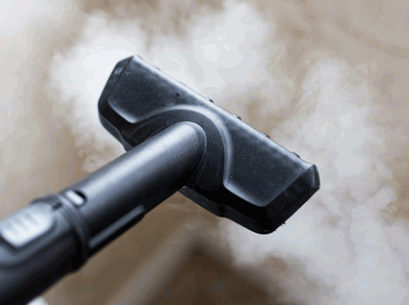Steam cleaning is a popular and effective method for cleaning a variety of surfaces without the use of harsh chemicals.
We will explore how steam cleaning works, the different types of steam cleaners available, the surfaces that can be cleaned with steam, and the benefits and limitations of this cleaning method.
Learn how to use a steam cleaner, precautions to take while using one, and how to properly maintain your steam cleaner. Whether you’re new to steam cleaning or looking to improve your technique, this article has everything you need to know.
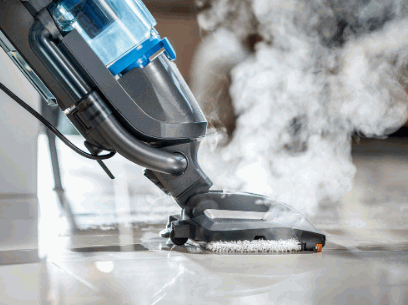
What Is Steam Cleaning?
Steam cleaning is a method of cleaning surfaces using high-temperature steam to sanitize and remove dirt, grime, and bacteria effectively.
Along with its cleaning capabilities, steam cleaning is also environmentally friendly as it does not require the use of harsh chemicals that can be harmful to both humans and the environment. The high-temperature steam effectively eliminates germs and bacteria, making it an ideal choice for households with children or pets.
Steam cleaners are versatile and can be used on a wide range of surfaces such as tile, hardwood floors, upholstery, and even carpets. The steam not only cleans these surfaces but also sanitizes them, leaving behind a fresh and hygienic environment.
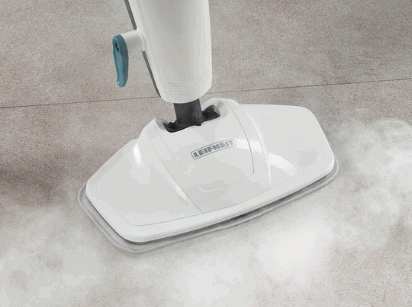
How Does Steam Cleaning Work?
Steam cleaning works by heating water to high temperatures to produce steam, which is then applied to surfaces to break down and remove dirt, bacteria, and allergens.
When steam is generated, its high temperature plays a crucial role in sanitizing surfaces by effectively killing bacteria and germs that lurk on various surfaces. The intense heat of the steam not only helps to dissolve stubborn dirt and grime but also significantly reduces the presence of harmful pathogens.
Steam cleaning is particularly efficient when it comes to cleansing various types of surfaces, ranging from hardwood floors and tiles to carpets and upholstery. The versatility of steam makes it a valuable tool for eliminating contaminants without the need for harsh chemicals, making it an eco-friendly and safe cleaning method.

What Are The Different Types Of Steam Cleaners?
The different types of steam cleaners include handheld steam cleaners, steam mops, and professional-grade steam cleaning machines that cater to various cleaning needs on surfaces like hardwood floors, carpets, and upholstery.
Handheld steam cleaners are compact and easy to use, perfect for quick spot-cleaning on various surfaces such as kitchen countertops, bathroom tiles, and car interiors. They are versatile and convenient for tackling small areas without the need for extensive setup.
Steam mops are ideal for larger areas and are designed specifically for cleaning hardwood floors, tiles, and linoleum surfaces. They provide a deep clean without the use of harsh chemicals, making them perfect for households with children or pets.
Professional-grade steam cleaning machines, often used in commercial settings, offer high-temperature steam that can effectively sanitize and clean tough stains on carpets, rugs, and upholstery. These machines are powerful and efficient for heavy-duty cleaning tasks.
What Are The Different Surfaces That Can Be Cleaned With Steam Cleaning?
Steam cleaning can effectively clean a variety of surfaces such as hardwood floors, carpets, upholstery, and tiles, eliminating allergens and bacteria without the need for harsh chemicals.
One of the key advantages of using steam cleaning is its versatility in sanitizing different surfaces. Whether it’s the grime on hardwood floors, the embedded dirt in carpets, or the stubborn stains on tiles, steam cleaning can tackle them all effectively. By utilizing the strength of high-temperature steam, this method not only removes visible dirt but also gets rid of unseen allergens and harmful bacteria, promoting a healthier living environment. The eco-friendly aspect of steam cleaning makes it a preferred choice for those looking to minimize chemical usage while achieving thorough cleanliness.
What Are The Benefits Of Steam Cleaning?
The benefits of steam cleaning include chemical-free cleaning, deep cleaning that eliminates bacteria and allergens, and safe sanitization of various surfaces without the use of harmful chemicals.
Steam cleaning harnesses the power of high-temperature steam to break down dirt, grease, and grime on surfaces, making it an eco-friendly and efficient cleaning method. Not only does steam penetrate porous surfaces like grout and fabrics, but it also kills germs and bacteria on contact, leaving behind a hygienic environment. Steam cleaning is versatile, and suitable for use on floors, upholstery, countertops, and even windows, making it a comprehensive solution for maintaining a clean and healthy living space.
Explore in-depth: How To Clean Bricks With Vinegar
Chemical-Free Cleaning
Chemical-free cleaning using steam ensures a safe and eco-friendly method to eliminate bacteria, viruses like COVID-19, and other contaminants without the use of harmful chemicals.
One of the key benefits of utilizing steam for cleaning purposes is the ability to sanitize surfaces effectively without leaving behind any chemical residues. Not only does this approach help protect the environment by reducing the usage of harsh substances, but it also ensures a safer living or working environment for individuals sensitive to chemical exposure. The high temperatures generated by steam cleaners are highly effective in killing germs, bacteria, and even tough viruses like COVID-19, providing a thorough and efficient cleaning solution.
Deep Cleaning
Deep cleaning with steam ensures thorough removal of dirt, dust mites, and allergens from surfaces, reaching into crevices and pores for a hygienic and fresh environment.
This method not only provides a deep cleanse but also sanitizes the surface effectively, leaving no residues behind. The power of steam in eliminating germs and bacteria is unmatched, making it an ideal choice for households concerned about cleanliness. By harnessing the natural properties of water, steam cleaning offers a safe and eco-friendly solution for combating stubborn stains and odors. Its ability to penetrate even the most hard-to-reach areas ensures a comprehensive cleaning process while being gentle on delicate surfaces. Incorporating steam into your cleaning routine can significantly improve indoor air quality and create a healthier living space.
Kills Germs And Bacteria
Steam cleaning kills germs and bacteria such as E. Coli and Salmonella on surfaces by utilizing high-temperature steam to sanitize and disinfect without the need for chemical agents.
When exposed to high-temperature steam, these harmful microorganisms are effectively eliminated, making steam cleaning an eco-friendly and non-toxic method for germ eradication.
The heat generated by steam cleaners can reach temperatures that exceed 200 degrees Fahrenheit, which is critical for effectively targeting and destroying bacteria. This makes steam cleaning not only a powerful cleaning method but also a reliable choice for maintaining a sanitary environment.
With the ability to penetrate porous surfaces and eliminate germs without leaving behind chemical residue, steam cleaning is gaining popularity as a safe and efficient solution for disinfecting surfaces in homes, offices, and various commercial settings.
Safe For Allergies And Asthma
Steam cleaning is safe for individuals with allergies and asthma, as it effectively removes allergens and dust particles from surfaces, promoting a clean and healthy indoor environment.
One of the key benefits of steam cleaning is its ability to penetrate deep into surfaces and eliminate not only visible dirt but also microscopic particles that can trigger allergy symptoms or asthma attacks. By using high-temperature steam without the need for harsh chemicals, this cleaning method provides a natural and non-toxic way to maintain a hygienic living space.
The steam’s heat effectively kills bacteria, mold, and other potentially harmful microorganisms that can aggravate respiratory conditions, contributing to improved indoor air quality. This makes steam cleaning an ideal solution for allergy sufferers seeking a thorough and gentle cleaning method that protects their health.
Versatile And Time-Saving
Steam cleaning is a versatile and time-saving cleaning method that can be used on various surfaces with different attachments and settings, making it efficient and convenient for household cleaning tasks.
Whether you need to deep clean your carpets, sanitize your kitchen floors, or freshen up your upholstery, steam cleaning offers the perfect solution. With the right attachments, you can effortlessly switch between surfaces, ensuring a thorough and quick cleaning process. The adjustable settings allow you to customize the steam output based on the surface you are cleaning, maintaining both efficiency and effectiveness. The versatility of steam cleaning makes it a must-have tool in any household, saving you time and effort while achieving sparkling clean results.
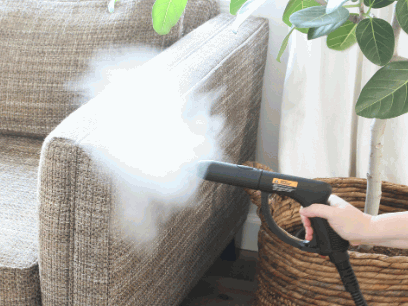
What Are The Limitations Of Steam Cleaning?
Despite its effectiveness, steam cleaning may have limitations such as unsuitability for certain surfaces, potential moisture residue, and difficulty in removing tough stains.
While steam cleaning is great for sanitizing various surfaces, it can be impractical for delicate materials like hardwood floors or sensitive upholstery, running the risk of damage. The residual moisture left behind after cleaning can lead to mold or mildew growth if not dried properly. Addressing deep-seated stains can also be a challenge with steam cleaning, as it may not always penetrate or fully eradicate stubborn marks, requiring additional treatments or specialized products for effective removal.
Not Suitable For All Surfaces
Steam cleaning may not be suitable for all surfaces, especially delicate materials like hardwood floors that can be damaged by excessive heat or moisture, requiring alternative cleaning methods.
Regarding maintaining the beauty and integrity of hardwood floors, traditional steam cleaning methods can pose a risk due to the potential damage caused by prolonged exposure to heat and moisture. Hardwood is a natural material that is sensitive to changes in temperature and humidity, making it susceptible to warping, cupping, or discoloration when exposed to steam.
Therefore, it is essential to opt for cleaning techniques that are gentle yet effective on hardwood surfaces. Alternative cleaning methods such as dry mopping, sweeping, or using specialized wood floor cleaners can help preserve the longevity and appearance of hardwood floors without risking damage from steam.
Can Leave Moisture Behind
One limitation of steam cleaning is that it can leave moisture behind on surfaces, particularly carpets, which may require additional drying time to avoid mold or mildew growth.
Excessive moisture can seep deep into the carpet fibers, creating an ideal environment for mold or mildew to thrive. Thorough drying is crucial to preventing these issues, as they not only impact the aesthetics of the carpet but also pose health risks. Proper ventilation and the use of fans can expedite the drying process, ensuring that the carpet is free from any moisture accumulation. It is advisable to keep the room well-ventilated for several hours after steam cleaning to allow complete evaporation of any residual moisture.
May Not Remove Tough Stains
Steam cleaning may struggle to remove tough stains on surfaces like carpets, requiring pre-treatment or the use of specialized cleaning agents for effective stain removal.
When dealing with stubborn stains, it’s crucial to address them promptly to avoid permanent damage to the carpet fibers. Utilizing properly formulated cleaning solutions can make a significant difference in the outcome. Pre-treating the stains with targeted products can help break down the tough residues before the steam cleaning process. Adjusting the steam cleaner settings, such as temperature and pressure, according to the type of stain and carpet material can improve the chances of successful stain removal.
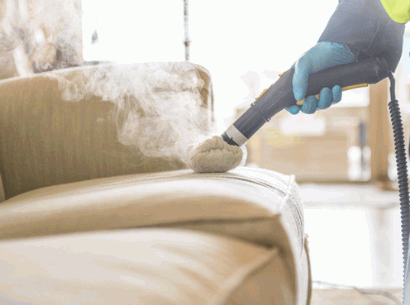
How To Use A Steam Cleaner?
Using a steam cleaner involves filling the reservoir with water, allowing it to heat up, selecting the appropriate attachment for the surface to be cleaned, and moving the steam cleaner methodically for thorough cleaning.
Once you have carefully filled the reservoir with water, you must ensure the steam cleaner is switched off and unplugged before proceeding. This is critical for safety reasons. Once safely plugged in, turn on the steam cleaner. Allow it some time to heat up and reach the optimal temperature for effective steam generation. Refer to the manufacturer’s instructions for the recommended heating duration.
- Next, select the right attachment for the surface you are cleaning. Whether it’s a brush for carpets or a nozzle for tight corners, each attachment is designed for specific cleaning tasks. Ensure the attachment is securely fitted before starting the steam cleaning process.
- Now, it’s time to put the steam cleaner into action. Begin cleaning methodically, moving the cleaner in slow, overlapping strokes for thorough cleaning. Pay special attention to stubborn stains or heavily soiled areas, giving them extra steam to effectively remove dirt and grime.
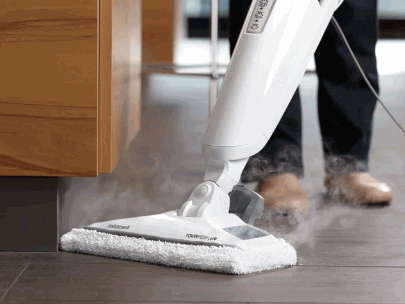
What Precautions Should Be Taken While Using A Steam Cleaner?
When using a steam cleaner, it is essential to wear protective gear, avoid contact with the hot steam, ensure proper ventilation, and follow manufacturer instructions to prevent accidents and protect surfaces.
Wearing protective gear, such as gloves and eye protection, shields the skin and eyes from potential burns and injuries. It is also crucial to maintain a safe distance from the hot steam to prevent any accidental burns or scalding. Adequate ventilation ensures that the steam cleaner’s emissions do not accumulate in enclosed spaces, minimizing the risk of respiratory issues.
Following the manufacturer’s guidelines guarantees the proper use of the steam cleaner and reduces the likelihood of damaging surfaces or causing malfunctions. Observing these safety precautions not only ensures a smooth cleaning process but also safeguards your well-being and the integrity of your surroundings.
How To Maintain A Steam Cleaner?
Maintaining a steam cleaner involves regular cleaning of attachments, descaling the unit, proper storage to prevent damage, and following maintenance schedules to ensure optimal performance during steam cleaning tasks.
One of the key aspects of maintaining a steam cleaner is attachment cleaning. Over time, residues can build up in the attachments, affecting the steam flow and efficiency. To address this, it is recommended to detach the accessories and clean them thoroughly using a mild detergent or vinegar solution. Descaling the unit is another crucial step to prevent mineral deposits that can clog the internal mechanisms. Regular descaling, following the manufacturer’s guidelines, helps in maintaining functionality and prolonging the lifespan of the steam cleaner.
